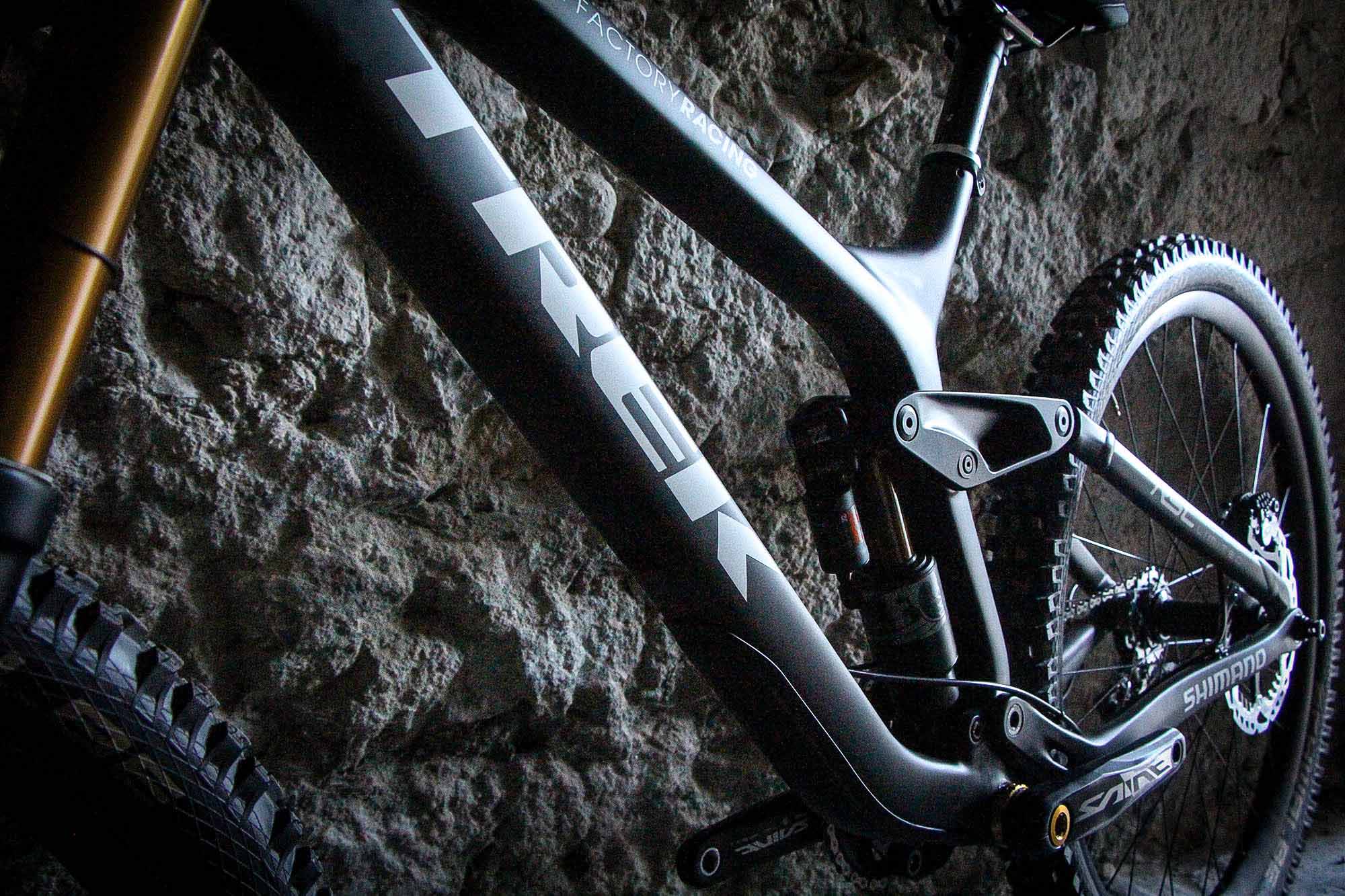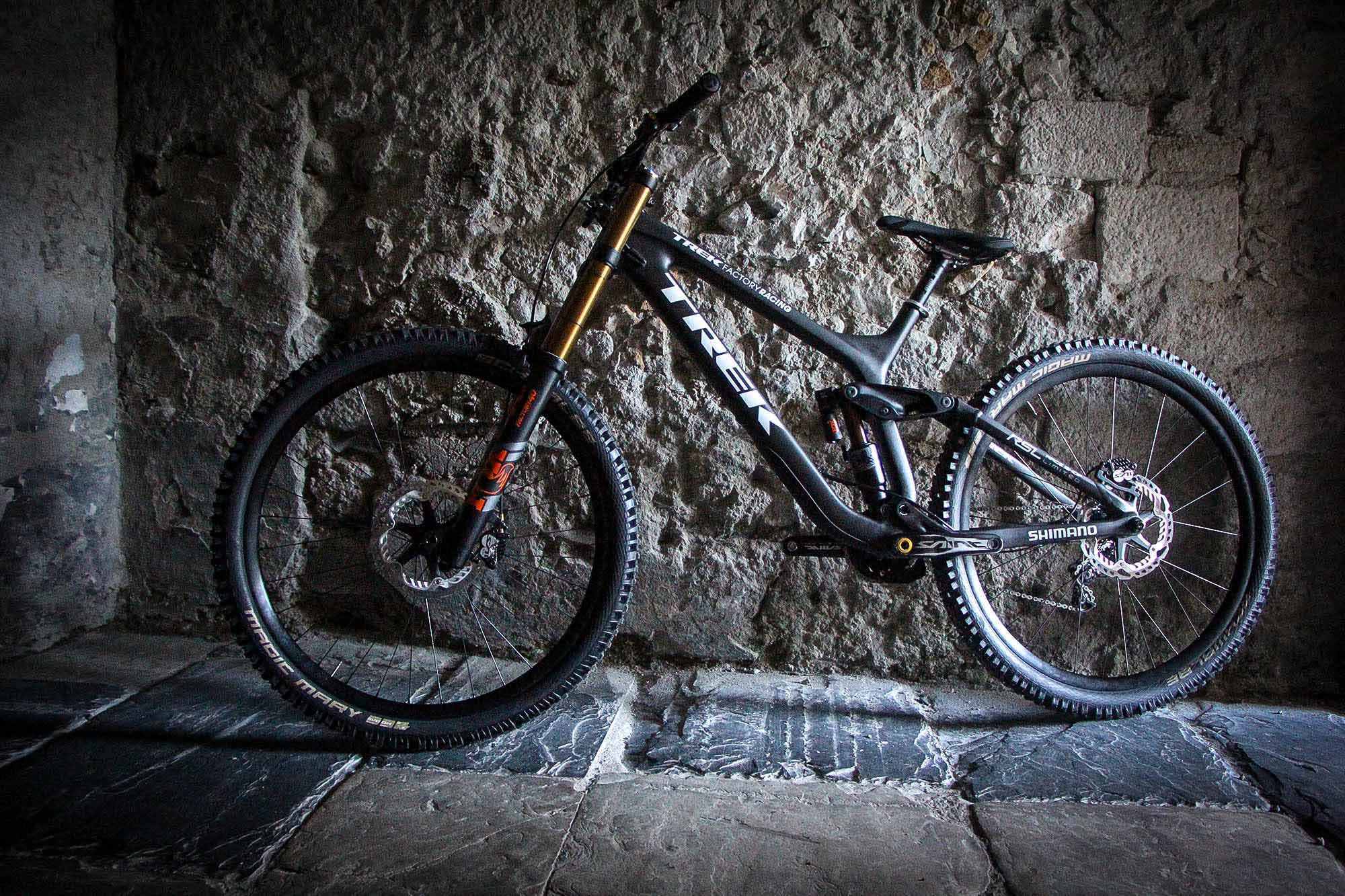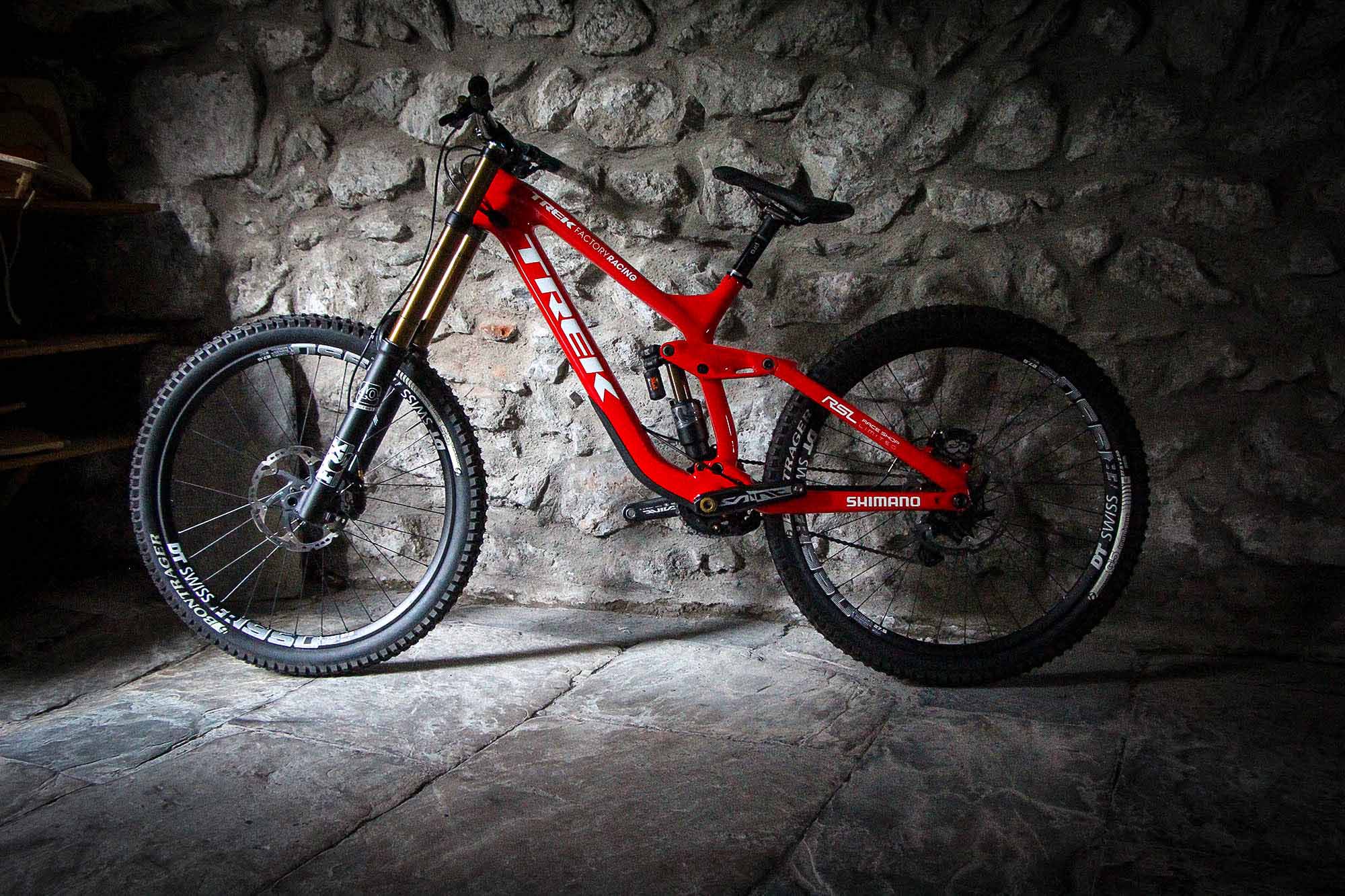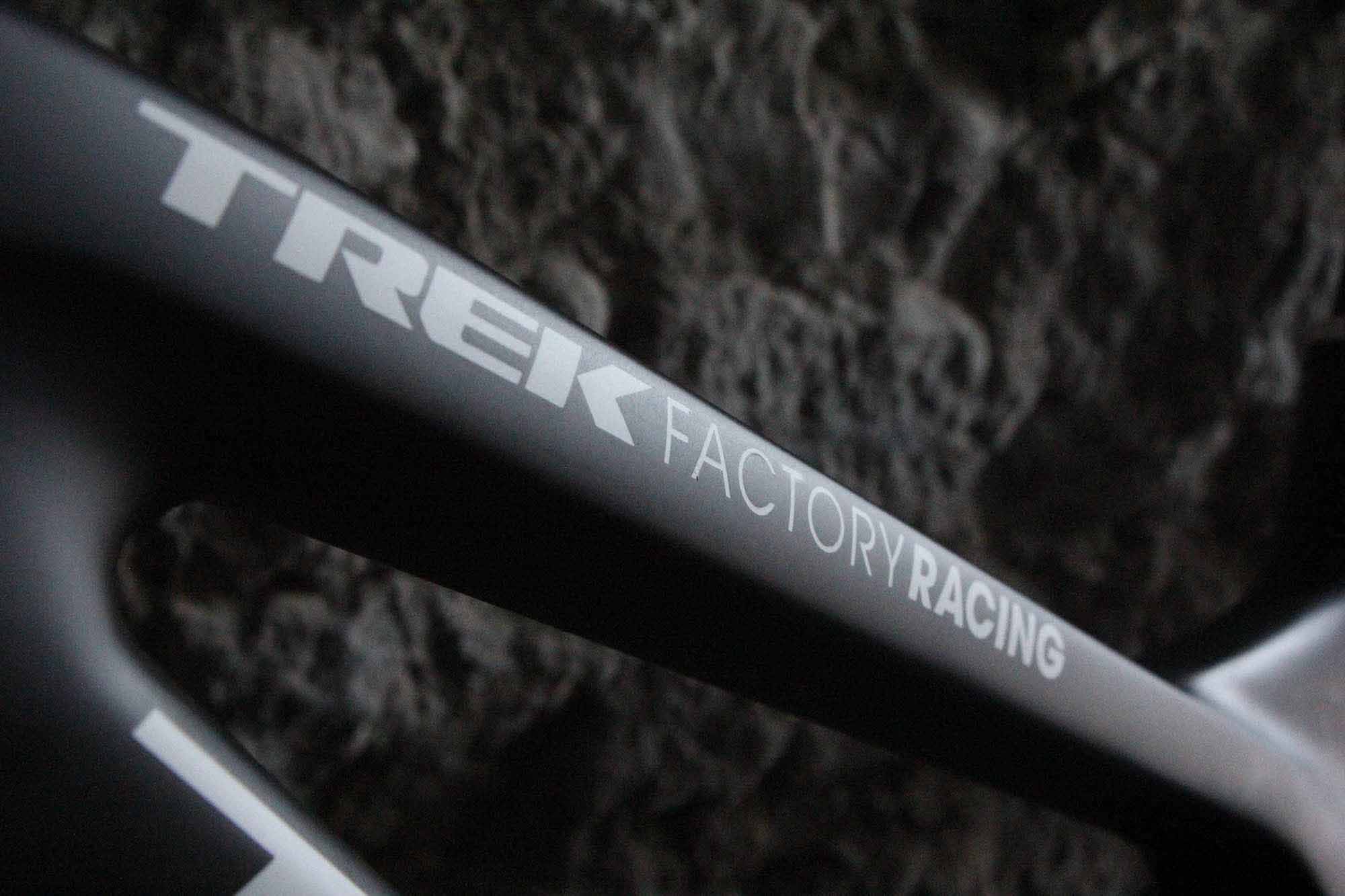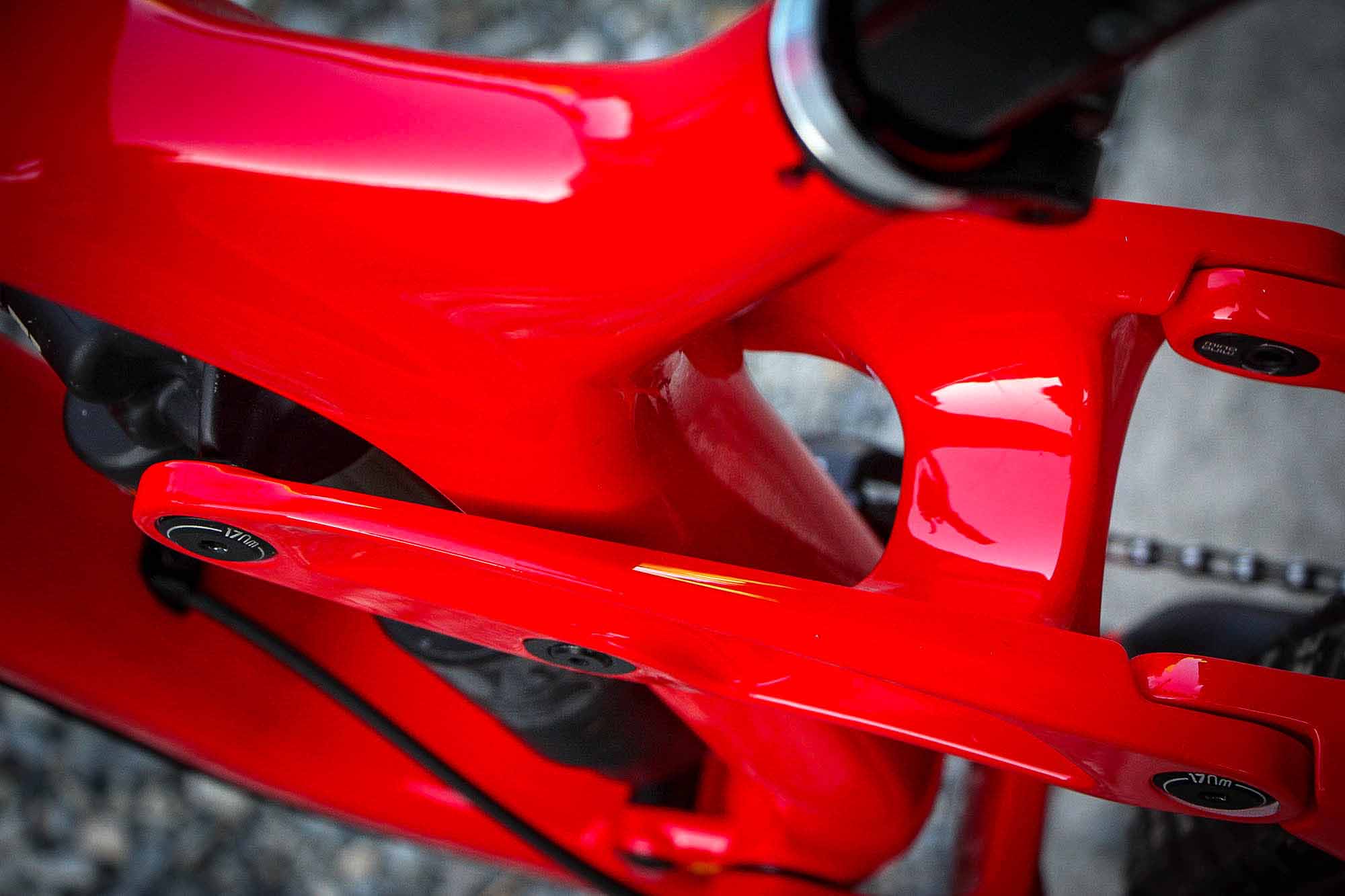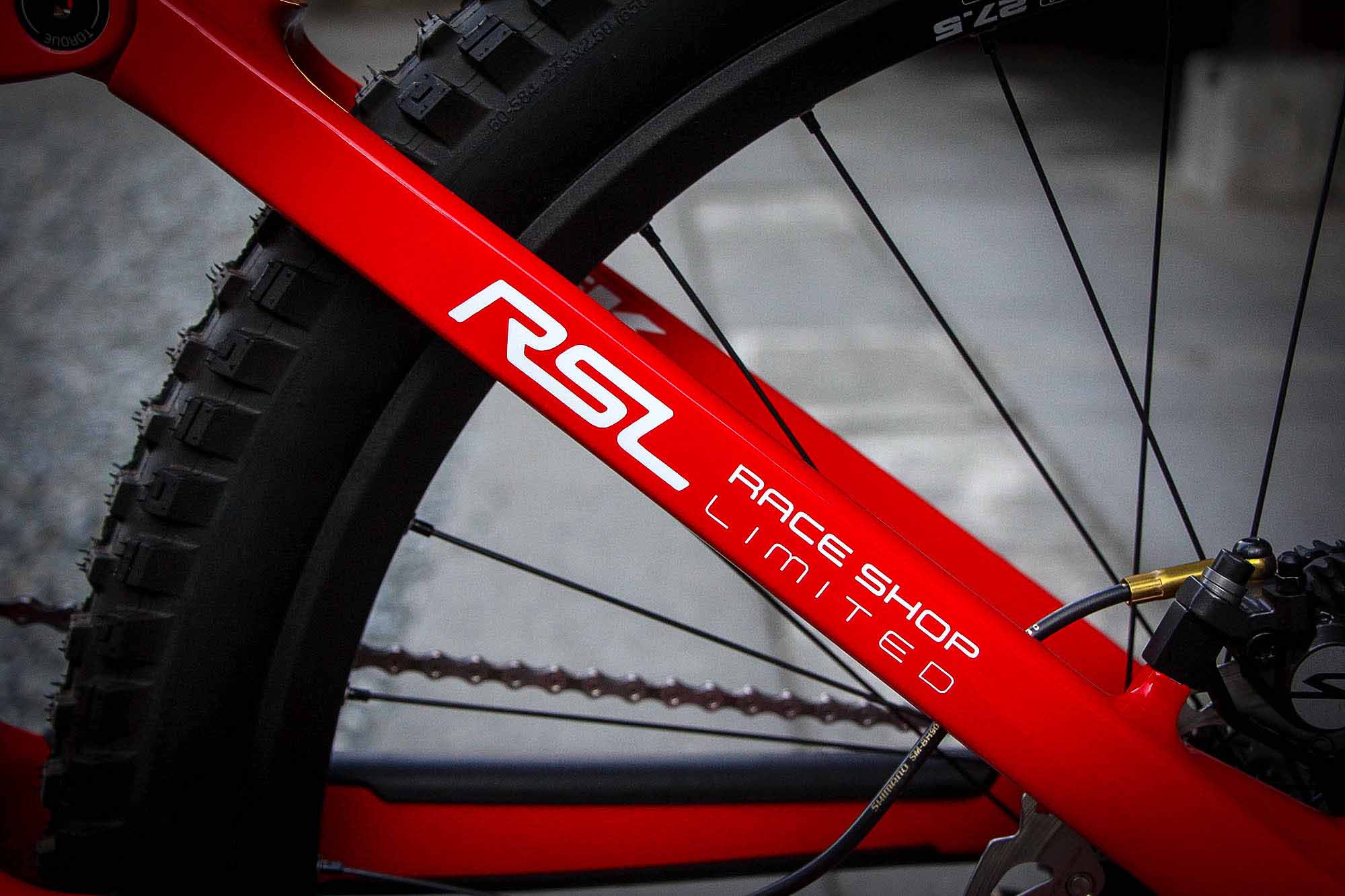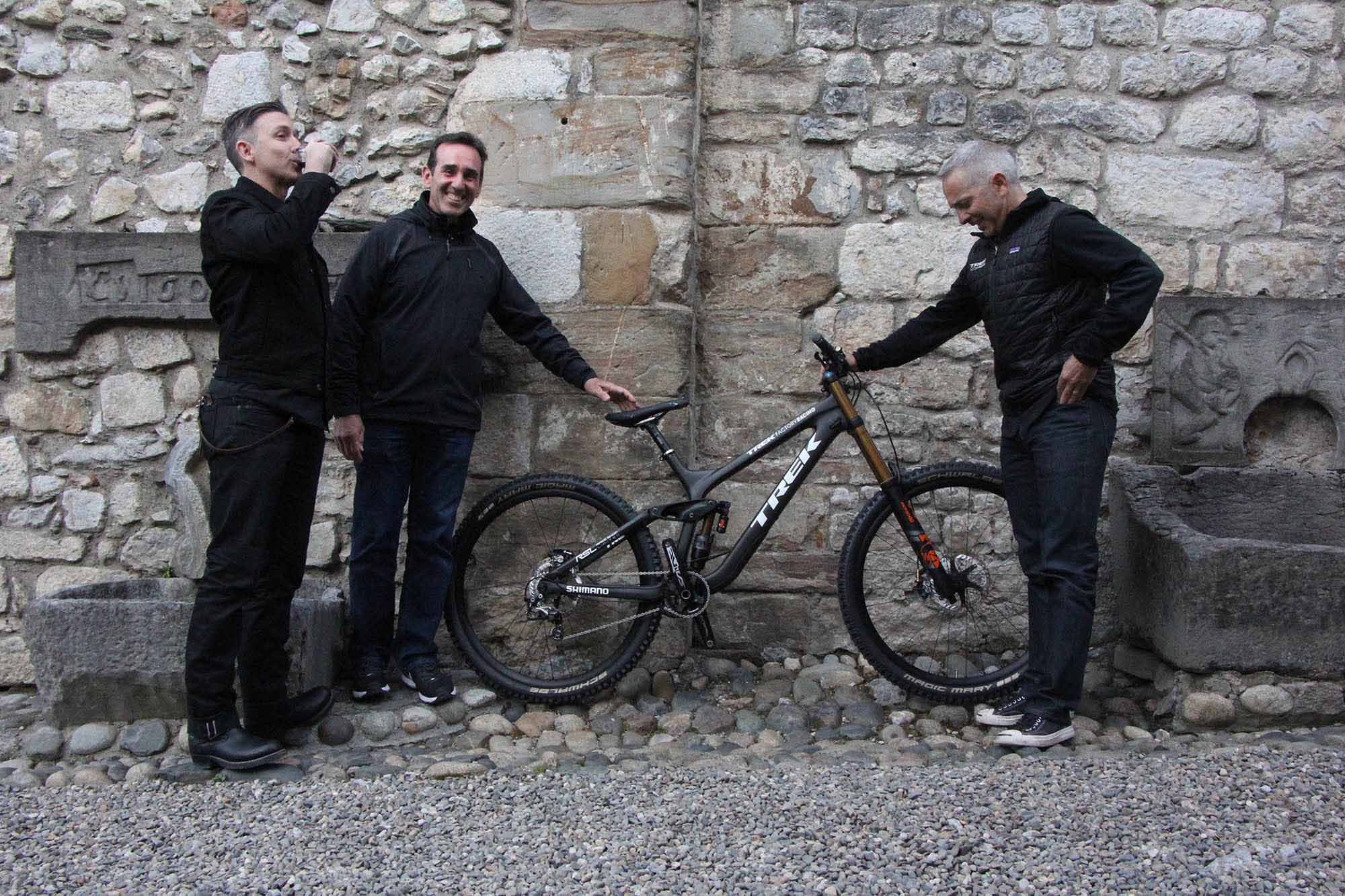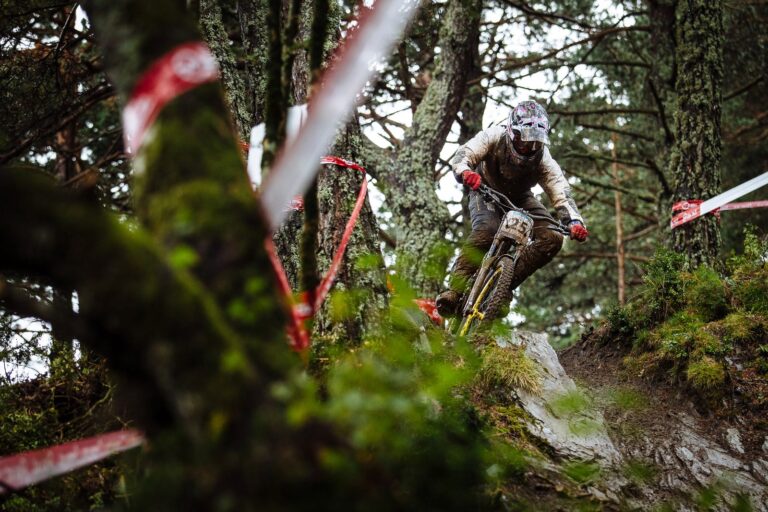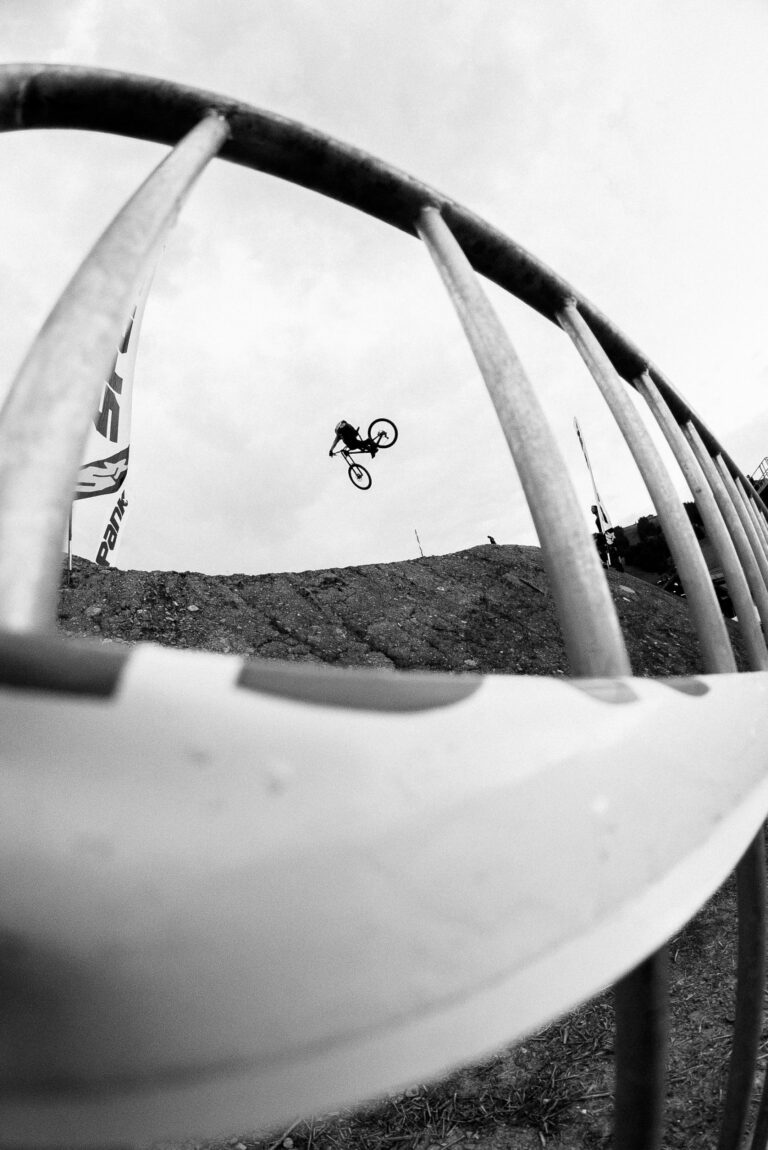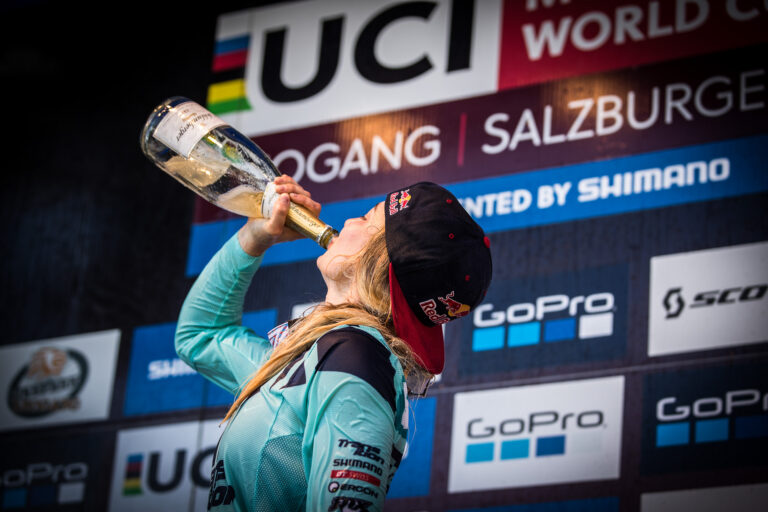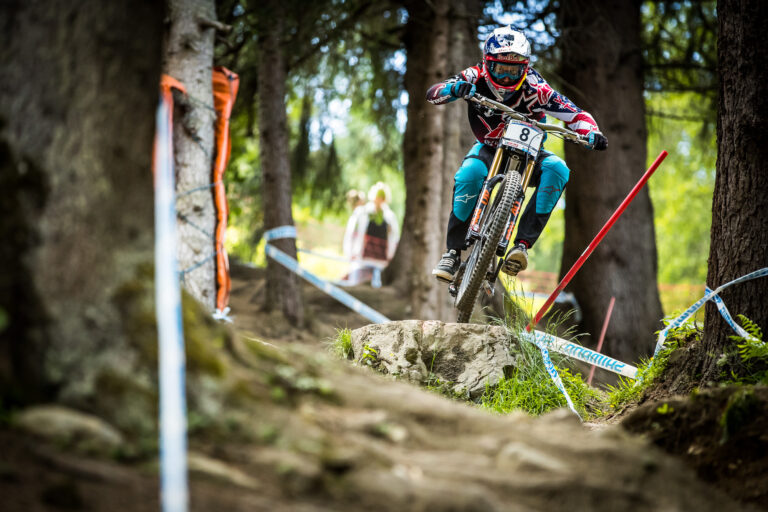So, what are we looking at with the Session 29. First of all, it’s full carbon. Trek are using a new lay-up that they reckon increases stiffness while reducing weight. If you believe their graphs then it’s all very clever stuff, however we’re going to wait until it’s trail tested until we start heaping on praise. The thing that does matter is this is now the first production, carbon 29er downhill bike, and nobody can take that away.

The sleek lines and tidiness that have always been a hallmark of Session bikes returns, although it’s been reduced to 190mm travel. For now, we see 180-190mm bikes being the benchmark for 29ers in downhill, with the rollover of the bigger wheels, any more simply isn’t needed.
Geometry wise, the 29er is slightly slacker and a bit shorter, but really you’re splitting hairs, they’re pretty comparable.

As for the changes that apply to both wheel sizes, the Full Floater link is gone, to be replaced with a fixed lower shock mount and trunion mounts up top. The reason for this is the same as on the Trek Slash, air shock technology is now at a point where the floater isn’t needed, in return for ditching it you can stiffen up the frame and reduce the weight. This bike was designed around the Float X2 but you can still run a coil if you like (as the Athertons will be doing this year).
Also updated is the geometry, with flappable headest cups and a mono link, there are actually six head angle permutations from 62.1 degrees to 64.4 degrees and a bottom bracket height of either 349 or 356mm. Also changed is a longer top tube, and proportionate seat tubes depending on the frame size.

The 27.5 inch bike will be available as a full build (£7,500) or a frame set (£3,000). The 29 bike will be released as a frame, shock and fork for £4,350 leaving you to build up the rest of the parts – we suggest you do so carefully! Both bikes are due to drop in Autumn.
If this all sounds a bit dear for you then Trek have released the Session 8 – an alloy version of the current frame, a full build is £3,600 and the alloy frame set is £1,750.

So, big wheels aside, this is more a case of tweaking and updating than anything else. But then, who can blame Trek. This is a record breaking platform that has delivered 16 World Cup wins, 31 podiums, 3 World Champions, 2 Rampage wins, an era of Gwinning and a perfect season, a complete overhaul wasn’t really needed. You can’t help but feel that early adoption of big wheels will have it breaking some more records before long.
Trek bikes
